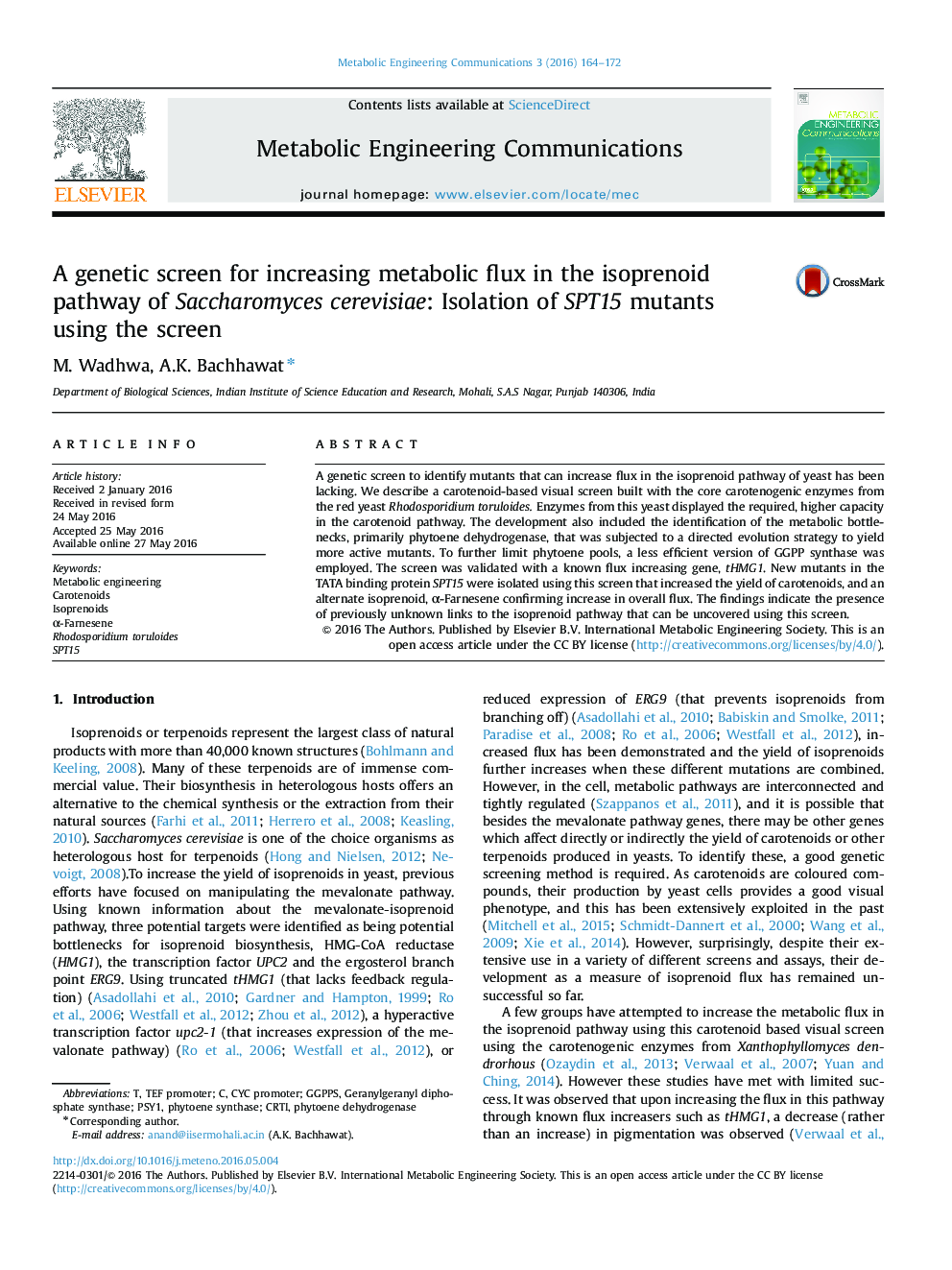| Article ID | Journal | Published Year | Pages | File Type |
|---|---|---|---|---|
| 571848 | Metabolic Engineering Communications | 2016 | 9 Pages |
•R. toruloides carotenogenic enzymes yield high β-carotene levels in S. cerevisiae.•Phytoene dehydrogenase mutant (RtCRTIA393T) isolated through directed evolution.•Preventing phytoene buildup by modulating the precursor enzyme GGPP synthase.•Genetic visual screen for increased flux in isoprenoid pathway validated by tHMG1.•Isolation of novel SPT15 mutants that show increased β-carotene and α-Farnesene.
A genetic screen to identify mutants that can increase flux in the isoprenoid pathway of yeast has been lacking. We describe a carotenoid-based visual screen built with the core carotenogenic enzymes from the red yeast Rhodosporidium toruloides. Enzymes from this yeast displayed the required, higher capacity in the carotenoid pathway. The development also included the identification of the metabolic bottlenecks, primarily phytoene dehydrogenase, that was subjected to a directed evolution strategy to yield more active mutants. To further limit phytoene pools, a less efficient version of GGPP synthase was employed. The screen was validated with a known flux increasing gene, tHMG1. New mutants in the TATA binding protein SPT15 were isolated using this screen that increased the yield of carotenoids, and an alternate isoprenoid, α-Farnesene confirming increase in overall flux. The findings indicate the presence of previously unknown links to the isoprenoid pathway that can be uncovered using this screen.
Graphical abstractFigure optionsDownload full-size imageDownload as PowerPoint slide
